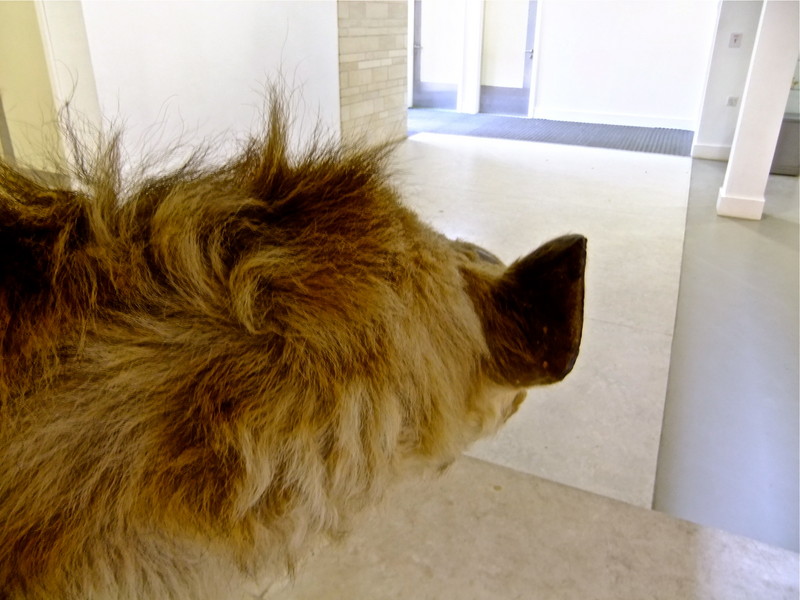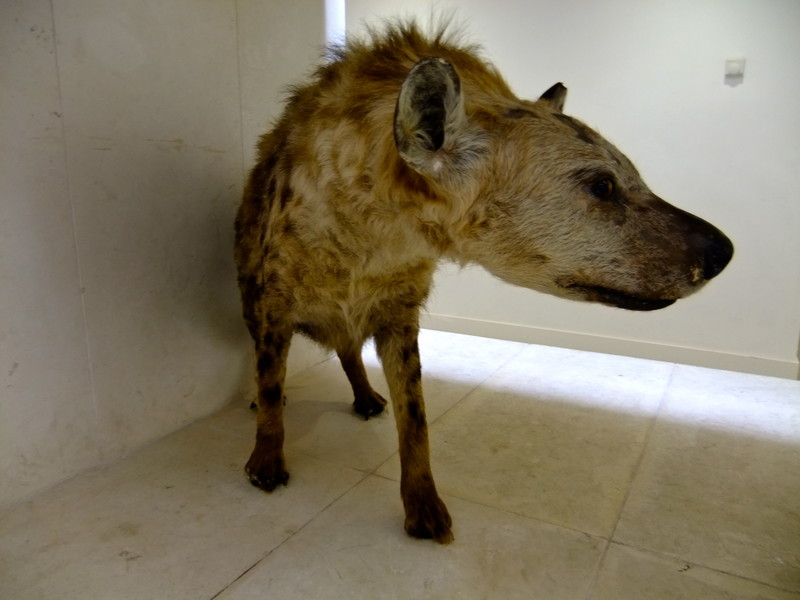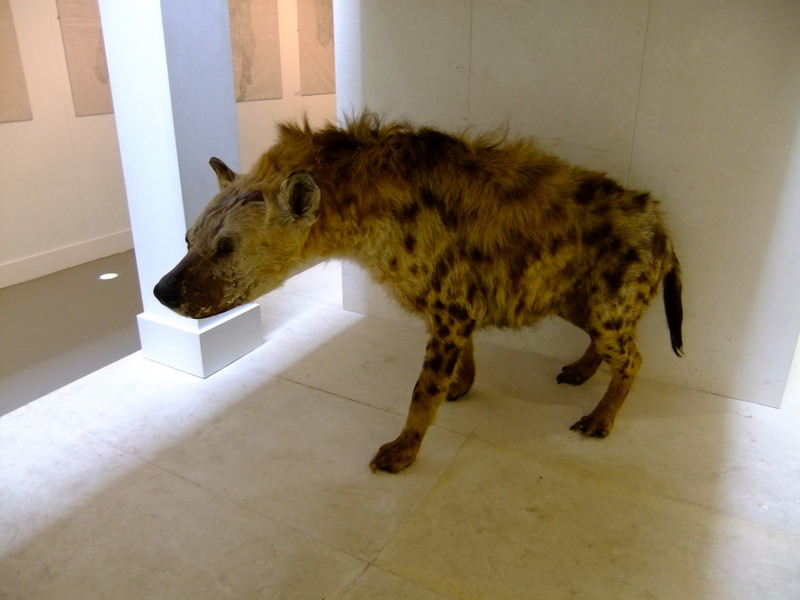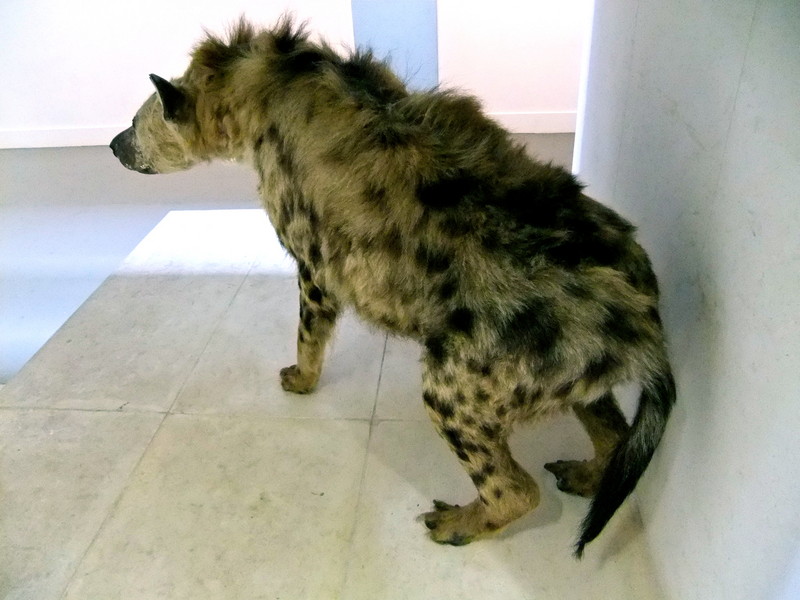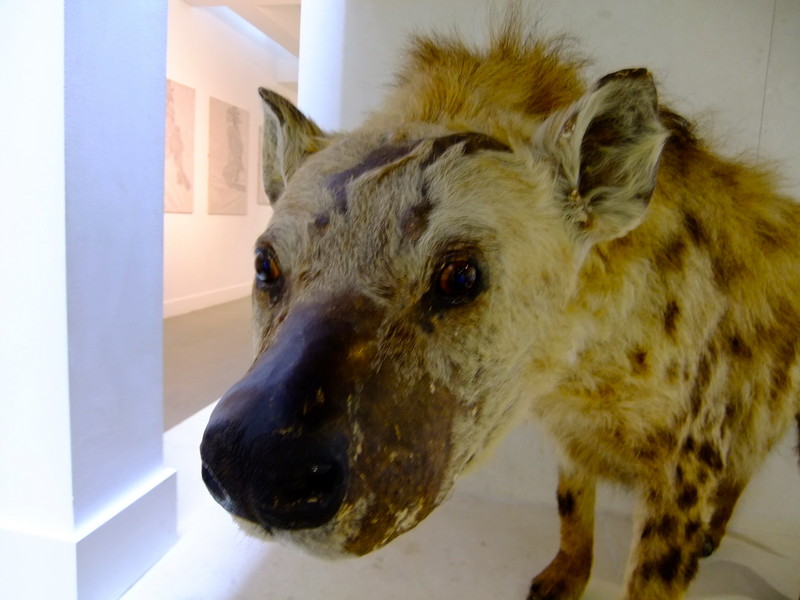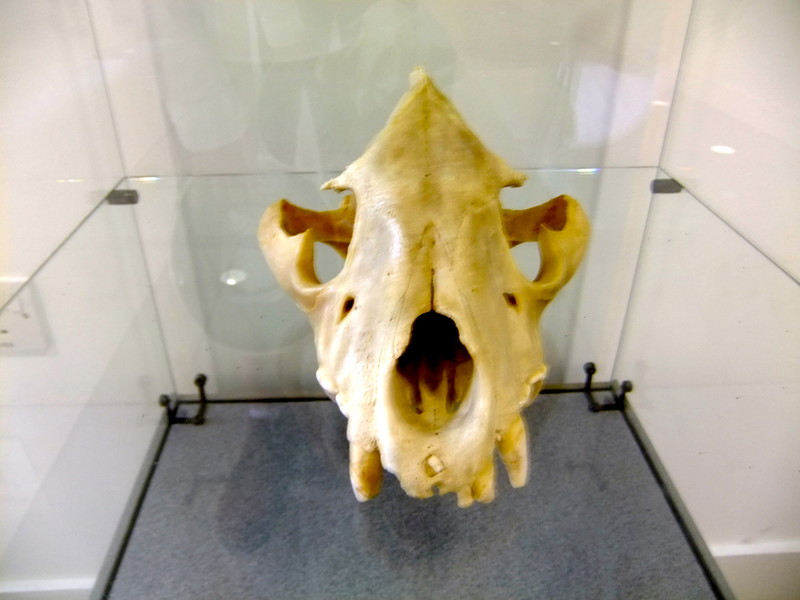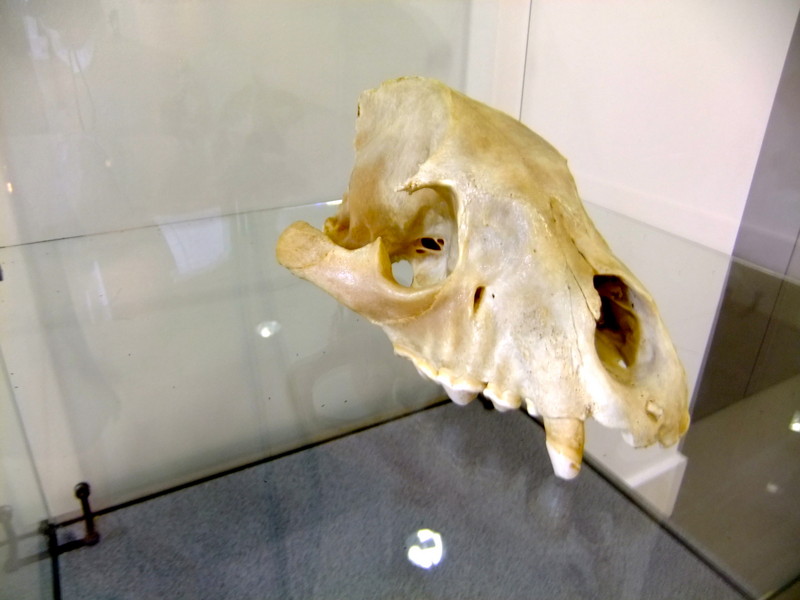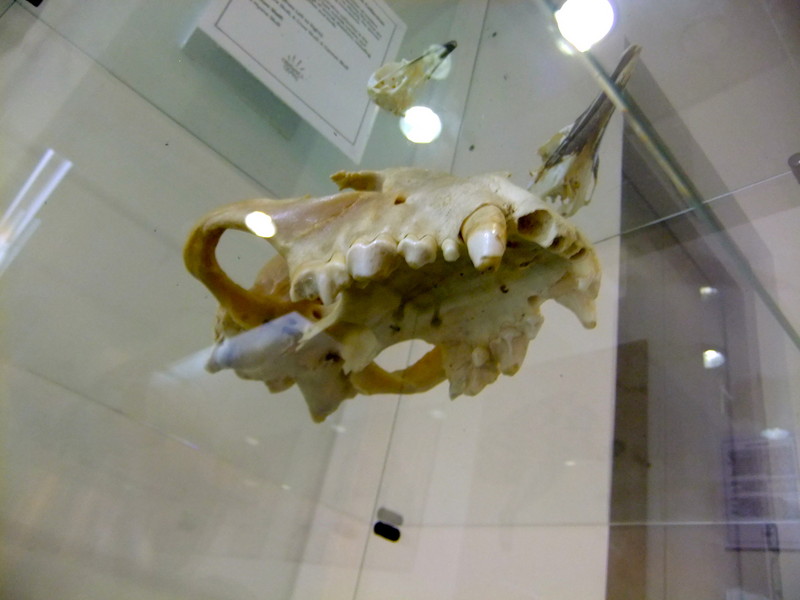 Topic RSS
Topic RSS
10:55 am
June 5, 2011
 Offline
OfflineWe've been to a place called Cresswell Crags today in Derbyshire, England.
This is a limestone gorge with a fascinating history, seasonally occupied by nomadic groups of people during the Upper Palaeolithic and Mesolithic periods. Evidence of Neolithic, Bronze Age, Roman and post-Medieval activity has also been found there. Robin Hood was known to hide supplies in the caves and it was only recently that caves themselves gave up their hidden art – in fact, it remains the site of Britain's oldest known cave art.
From Wiki: "In April 2003, engravings and bas-reliefs were found on the walls and ceilings of some of the caves; an important find as it had previously been thought that no British cave art existed. To this day the finds at Creswell Crags represent the most northerly finds in Europe.".
We did meet this beautiful creature:
From http://www.creswell-crags.org.uk/explore/exhibitio.....aena-skull: "This magnificent skull of an adult spotted hyaena (Crocuta crocuta) was found about 2 metres (7') below the surface of the deposits and 20 metres (65') from the entrance of Pin Hole during excavations by A.L. Armstrong between 1924 and 1936. Spotted hyaenas were one of the major predators at Creswell Crags and denned in the caves during the middle part of the Last Cold Stage. Dating evidence indicates that during this time spotted hyaenas were active around Creswell from at least 40,000 up until as recently as 22,000 years ago.
This skull is representative of the abundant spotted hyaena populations which were preying on the woolly rhinoceros during the middle part of the Last Cold Stage. Spotted hyaenas are extremely important, being responsible for many of the larger bone accumulations and much of what we know of the animal populations at this time has come from the study of fossil spotted hyaena dens. The spotted hyaena is one of the few mammalian carnivores that actually eats bone and, as a consequence, their droppings are commonly preserved.".
So, Gryka's 40,000 year old ancestor?
She had a tentative sniff at some of the guests, but with all that free range human available she seemed little interested in eating:
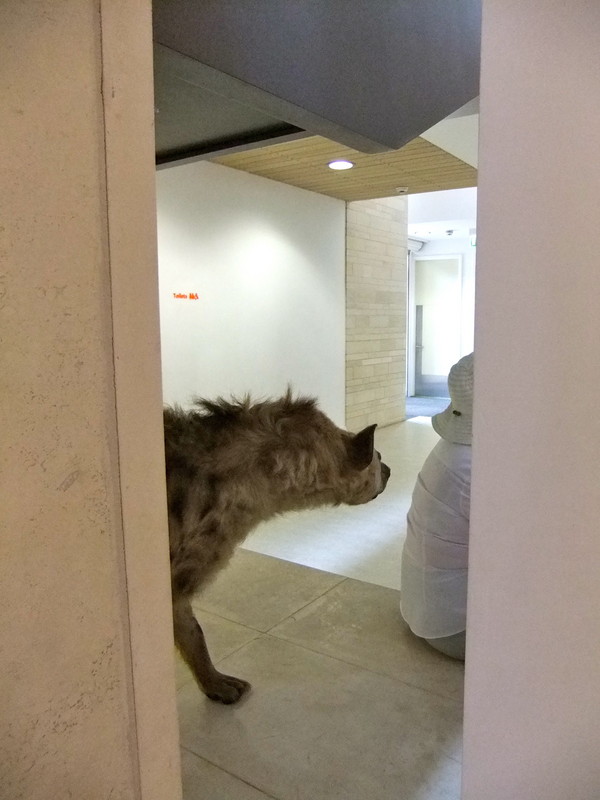
We had a really good time, enjoyed a couple of leisurely walks and had a nose in a few caves. Seeing the reliefs was quite something – actually finding them was something else. You definitely need a guide!
Here's one …
Directly under PM (1948) you can see the head of some kind of horse or horse-like creature – the rest of the outline can be traced.
The story behind PM is … as was told by the guide who informed us that "PM" returned to the crags after these refiefs had been found and told them that he saw them plain as day when he played in the caves as a child. As well as signing his name, he also drew a beard on the creature, thinking it looked like a goat.
Sadly, the entire gorge is littered with modern graffiti. Maybe after the next ice age people will look at all the scratchings and make wild and possibly off trail guesses about what it all meant!
Living in the Ice Age
http://livingintheiceage.pjgh.co.uk
2:23 pm
February 22, 2010
 Offline
OfflinePaul:
People forget that humans and spotted hyenas coexisted throughout most of Europe and Asia until very recently...and probably competed very directly, being the only two species that can reliably extract marrow from large bones. I talk more about that in these threads:
http://www.gnolls.org/forums/talk/bestiary/
http://www.gnolls.org/forums/talk/a-hyena-question/
Interestingly, the leg bone proportions of the "cave hyena" (the Eurasian variant) are different than modern hyenas, and they were first thought to represent a separate species...but it turns out they're basically genetically identical.
Those photos are great! Thanks for sharing them.
JS
Most Users Ever Online: 237
Currently Online:
17 Guest(s)
Currently Browsing this Page:
1 Guest(s)
Member Stats:
Guest Posters: 1831
Members: 34119
Moderators: 0
Admins: 1
Forum Stats:
Groups: 1
Forums: 2
Topics: 250
Posts: 7176
Administrators: J. Stanton: 2045
 Log In
Log In Register
Register Home
Home
 Add Reply
Add Reply




 Quote
Quote